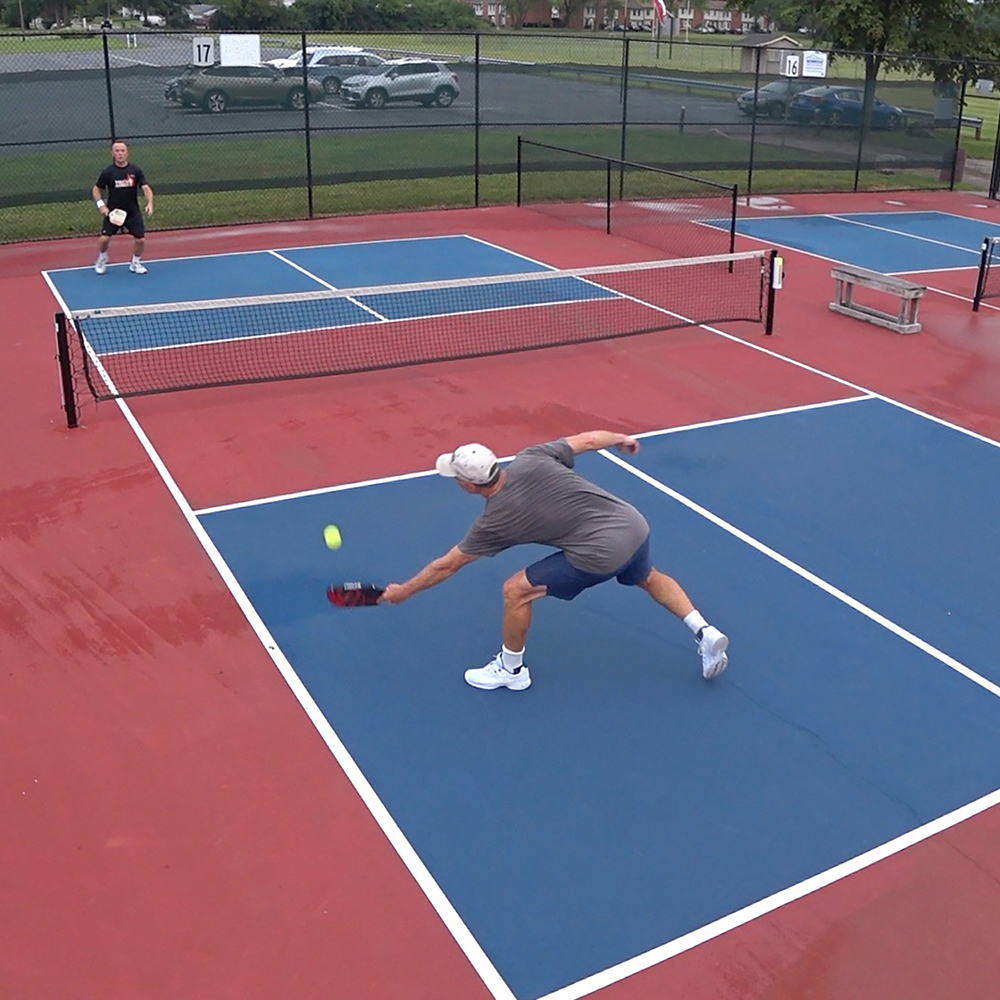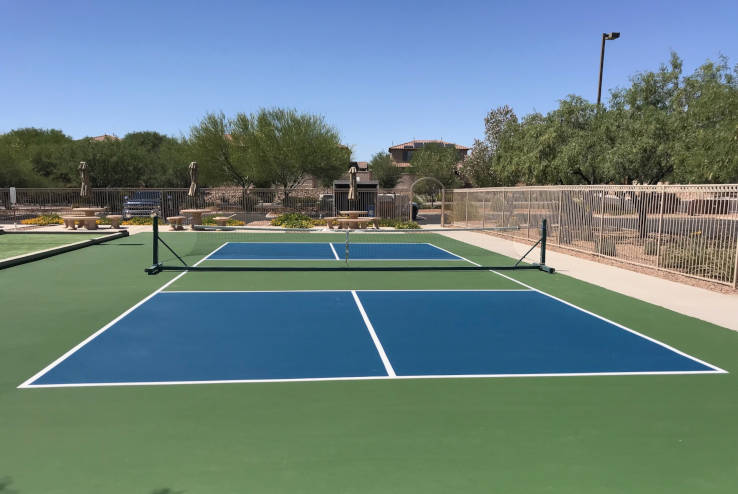The Ultimate Overview to Planning Your Pickleball Court Construction Task
The Ultimate Overview to Planning Your Pickleball Court Construction Task
Blog Article
Boost Resident Engagement With Community-Driven Pickleball Court Projects
The appearance of community-driven pickleball court jobs presents an one-of-a-kind chance to foster local engagement and enhance neighborhood ties. By proactively involving locals in the planning and implementation phases, such campaigns not just develop leisure areas but likewise advertise a shared sense of ownership. Understanding the actions to launch these projects, consisting of reliable stakeholder engagement and source allocation, is important. The actual concern remains: just how can these grassroots efforts be tactically executed to make sure sustainability and inclusivity in diverse areas? Checking out effective case research studies may offer the insights needed to answer this critical problem.
Significance of Area Involvement
Area engagement is an essential aspect in the effective growth of pickleball court projects, as it cultivates a feeling of ownership and cumulative duty among locals. When neighborhood members are proactively included in the preparation and execution phases, they are more probable to promote for the project's long-lasting success. Engaging stakeholders such as regional players, family members, and entertainment groups guarantees that the centers satisfy the diverse demands and preferences of the area.
Furthermore, neighborhood involvement grows an encouraging atmosphere where locals feel empowered to contribute their concepts and resources. Pickleball court construction. This joint method can cause innovative options that boost the design and functionality of the courts, making them a lot more enticing to a larger target market. In addition, involving citizens in decision-making processes can strengthen social ties, advertising inclusivity and unity within the community
The presence of neighborhood support for a pickleball task can also play a crucial duty in safeguarding financing and authorization from regional authorities. By demonstrating a common dedication to leisure growth, communities can successfully promote for resources and plan adjustments that favor the establishment of pickleball courts, eventually enhancing the neighborhood society and entertainment landscape.
Steps to Initiate a Job
Launching a pickleball court job needs a systematic approach that improves the structure of community involvement established in previous conversations. The primary step is to set up a job committee making up local stakeholders, enthusiasts, and reps from pertinent companies. This diverse team makes sure that multiple point of views are thought about.
Following, carry out a demands analysis within the community. Studies, focus teams, and public conferences can be efficient in assessing passion and event input on possible court areas, wanted features, and organizing choices. Following this, establish a job plan describing purposes, timelines, and obligations.
When the strategy is in location, involve with regional authorities to understand zoning guidelines and any required licenses. Interacting transparently with the community throughout this procedure is vital, as it promotes depend on and urges further involvement.
Furthermore, arranging community occasions can aid maintain energy and excitement. These events can serve as systems for more discussion and aid to reinforce area ties. File every action taken and keep detailed documents, as this will certainly be beneficial for future stages of the job, consisting of financing and resource acquisition.
Financing and Resources Available
Protecting funding and resources for a pickleball court project is commonly an essential step that can identify the project's expediency and success. Numerous avenues exist for getting financial backing, ranging from public funding to exclusive sponsorships. Regional federal government gives, commonly aimed at advertising community health and wellness and recreation, can supply substantial sponsorship for such efforts.
Along with government sources, nonprofit organizations and foundations frequently supply grants specifically for sports and community advancement projects. Involving neighborhood organizations as sponsors can likewise be a worthwhile method; many companies aspire to purchase area campaigns that improve have a peek at this website their business social obligation profile.
Crowdfunding systems have become a practical alternative for grassroots fundraising, enabling neighborhood participants to contribute directly to the task. This method not just increases funds but also promotes a sense of possession amongst participants.
Layout and Preparation Considerations
Reliable layout and preparation are essential components of any kind of effective pickleball court project following the acquisition of financing and resources. A comprehensive assessment of the proposed place is necessary; this consists of analyzing access, distance to existing community services, and the possibility for presence and involvement.
The layout of the court should follow official size specifications while taking into consideration the bordering environment. Including functions such as seating, shade structures, and suitable illumination can this substantially boost gamer experience and viewer enjoyment. Materials chosen for the court surface area ought to prioritize resilience and safety, with options like acrylic or asphalt offering ideal efficiency.
Entailing neighborhood participants in the design process fosters a feeling of possession and makes sure that the center fulfills regional demands - Pickleball court construction. This can be attained with public assessments and surveys, permitting stakeholders to share their choices and issues
Sustainability needs to likewise be a top priority; including eco-friendly materials and methods can contribute to long-term practicality. Producing an upkeep strategy to make certain the court stays in superb condition will certainly sustain ongoing neighborhood interaction and involvement in pickleball tasks.

Success Stories and Situation Research Studies
Highlighting the transformative impact of community-driven initiatives, several success tales highlight exactly how joint efforts have actually caused the advancement of lively pickleball courts across numerous areas. One remarkable example is the effort in a town in Florida, where residents grouped to transform an underutilized tennis court right into a devoted pickleball facility. Through fundraising events and partnerships with neighborhood organizations, the community raised adequate funds to install new internet, resurfacing, and lines, ultimately promoting a dynamic hub for regional players.
Likewise, in a rural location of The golden state, a grassroots motion arised to produce pickleball courts in a local park. The project not only engaged volunteers for building however also included workshops to engage community members in the sporting activity. As a result, the courts became a centerpiece for social interaction and fitness, bring in players of all ages.
These study exemplify just how community-driven tasks can enhance regional interaction, advertise physical activity, and strengthen social bonds. By leveraging collective sources and interest, areas can efficiently develop and sustain pickleball facilities that serve varied populations and cultivate a feeling of belonging.

Verdict
To conclude, community-driven pickleball court projects offer as important tools for enhancing regional involvement and fostering a feeling of belonging among homeowners. By prioritizing stakeholder involvement throughout the planning and implementation stages, these campaigns can properly address diverse neighborhood demands. In addition, leveraging available sources and analyzing successful situation research studies can provide useful understandings for future projects. Eventually, such efforts add to the transformation of public areas right into vibrant centers of physical fitness and social communication, reinforcing this community connections.
The appearance of community-driven pickleball court jobs provides an one-of-a-kind opportunity to cultivate neighborhood interaction and strengthen neighborhood ties.Neighborhood interaction is an essential aspect in the effective development of pickleball court tasks, as it fosters a sense of possession and collective obligation among residents. When area participants are actively entailed in the preparation and execution phases, they are extra likely to advocate for the project's lasting success.Initiating a pickleball court job requires a methodical method that builds on the structure of neighborhood involvement developed in previous conversations. The task not just engaged volunteers for construction but also consisted of workshops to engage neighborhood participants in the sporting activity.
Report this page